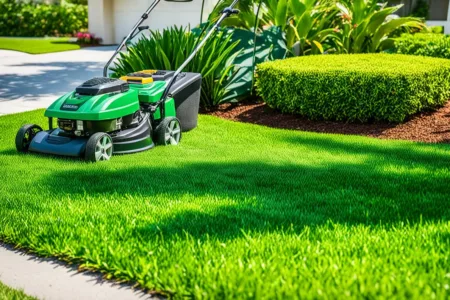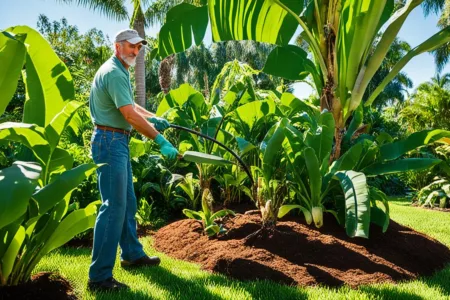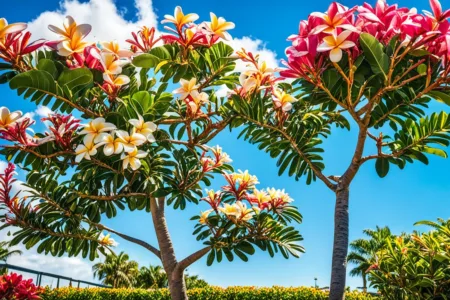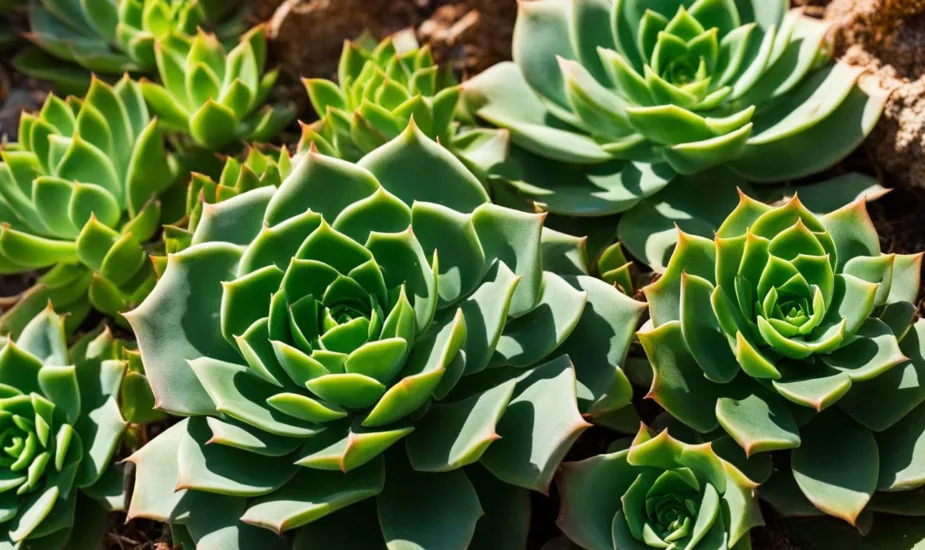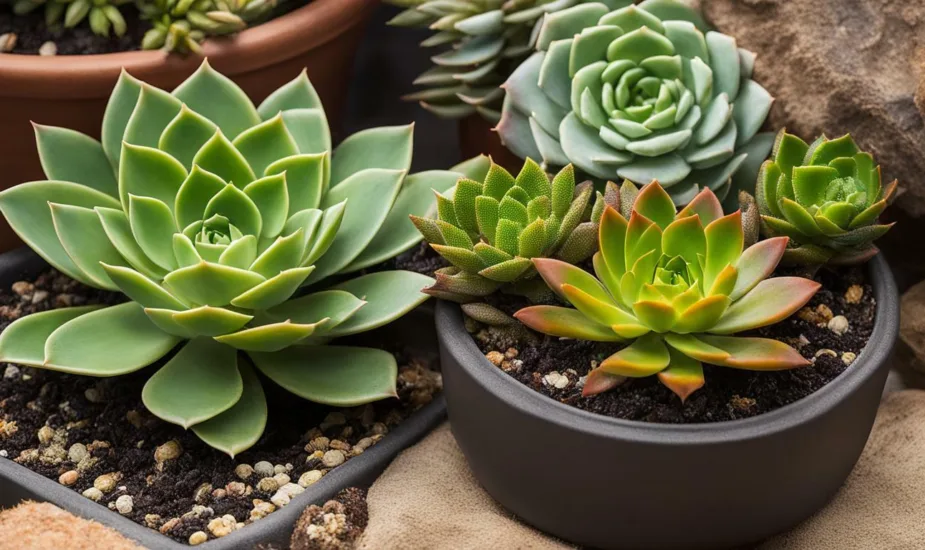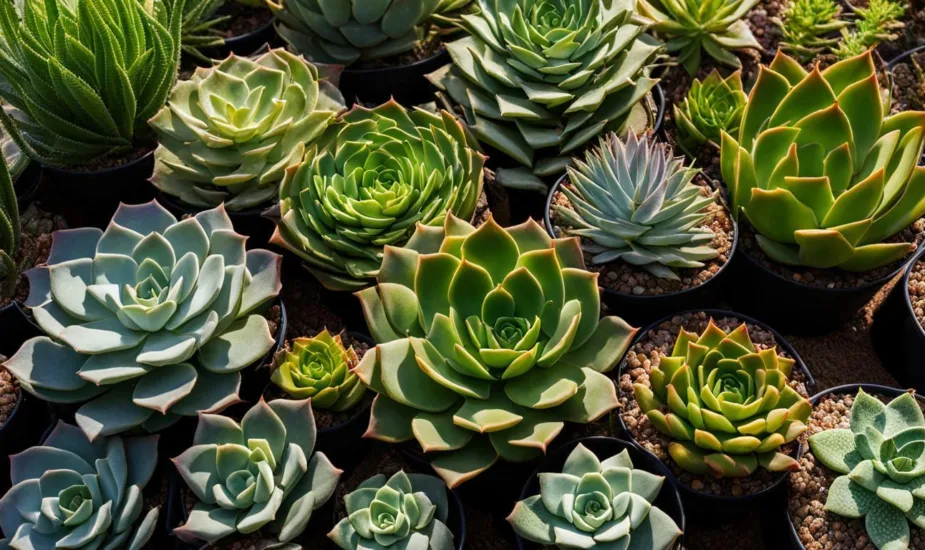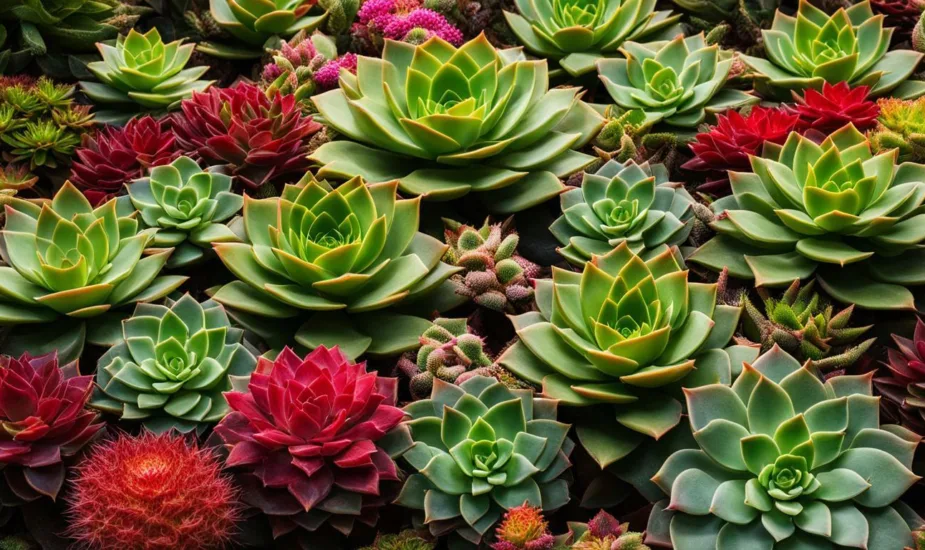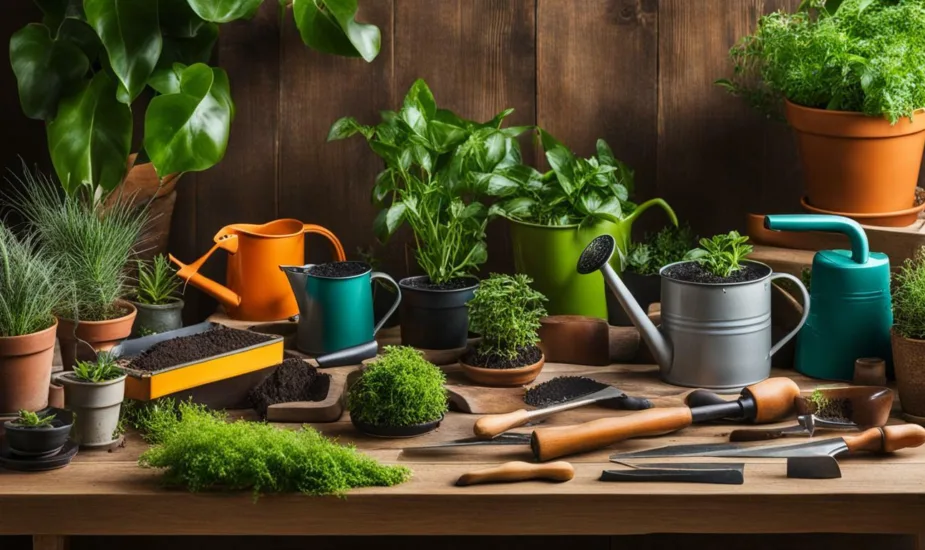How-To Planting Gladiolus Bulbs in Pots: A Simple Guide
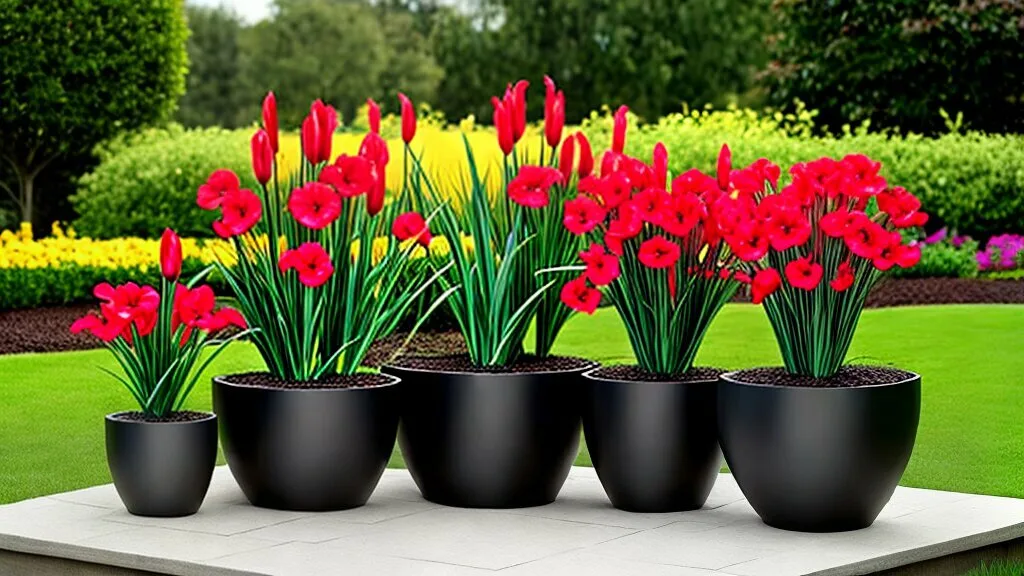
Imagine walking out onto your small apartment balcony, a warm cup of coffee in hand, to find a mini oasis of lush greenery and vibrant fruits. This is the beauty of container fruit gardening, a perfect solution for urban dwellers like me who crave the taste of homegrown fruit but have limited outdoor space.
When I first embarked on my journey into container fruit gardening, I had no idea where to begin. I was a complete novice, with little gardening experience and a desire to bring a touch of nature into my urban environment. That’s when I stumbled upon the world of potted fruit trees, the perfect option for those who want to enjoy fresh fruit without the need for a sprawling garden.
Through trial and error, as well as hours of research, I discovered the secrets to successful container fruit gardening. Now, I want to share my fresh picks guide with you, my fellow urban dwellers and beginner gardeners. In this guide, I’ll walk you through everything you need to know to start your own container fruit garden, from selecting the right varieties to essential gardening techniques and maintenance tips.
Get ready to transform your small space into a thriving oasis of fresh, homegrown fruit. Your taste buds will thank you!
Key Takeaways:
- Container fruit gardening is a great option for urban dwellers and beginners with limited outdoor space.
- Potted fruit trees provide delicious fruit and add beauty to any space.
- Choosing the right fruit tree varieties is crucial for container gardening success.
- Essential urban gardening techniques like soil mix selection and proper drainage are important for fruit tree health.
- Maintenance tips like watering, pruning, and overwintering are essential for container fruit gardening.
The Appeal of Container Fruit Gardening
Container fruit gardening is a popular choice for both experienced gardeners and beginners alike, offering numerous advantages. Potted fruit trees not only provide delicious fruit but also add beauty and greenery to any space. Whether you have limited outdoor areas such as balconies or patios or simply want to optimize your gardening space, container fruit gardening is the perfect solution. By utilizing pots, you can enjoy the benefits of space-saving gardening while still reaping the rewards of a bountiful fruit harvest.
Why Choose Potted Fruit Trees?
Potted fruit trees are a versatile option for any garden, providing an array of benefits. Here are a few reasons why you might consider choosing potted fruit trees for your container fruit garden:
- Flexibility: Potted fruit trees can be moved around, allowing you to optimize sunlight and shade for optimal growth and fruit production.
- Aesthetics: The beauty and greenery of fruit trees add visual appeal to any space, adding a touch of nature to balconies, patios, or even indoor environments.
- Convenience: With potted fruit trees, you have easy access to your favorite fruits right outside your doorstep, eliminating the need for travel to a local grocery store.
Benefits of Space-Saving Gardening
One of the key advantages of container fruit gardening is the ability to save space. With the challenges of limited outdoor areas in urban environments, container gardening allows you to make the most of your available space. By utilizing pots, you can enjoy the benefits of gardening in a compact and efficient manner. Whether you have a small balcony, rooftop, or even a windowsill, container fruit gardening makes it possible to grow your own fresh and delicious fruits without requiring a large plot of land.
Optimizing Sunlight and Shade for Container Trees
Optimizing sunlight and shade is essential for the health and growth of container fruit trees. By strategically moving your potted trees, you can ensure they receive the ideal amount of sunlight each day. Observing your trees and understanding their sunlight requirements is crucial for their overall well-being. If your trees are not getting enough sunlight, they may not bear fruit, while excess sunlight can cause stress or sunburn. With container gardening, you have the flexibility to adjust the positioning of your fruit trees to optimize their exposure to sunlight and shade.
Whether you have limited outdoor space or simply want to make the most of your gardening area, container fruit gardening offers numerous benefits. With potted fruit trees, you can enjoy not just the fruits but also the beauty they bring to your surroundings. By optimizing sunlight and shade, you can ensure that your container trees thrive and produce an abundant harvest. Let’s explore how to select the right fruit tree varieties for your container garden in the next section.
Selecting the Right Varieties for Your Container Fruit Garden

A close-up of a hand selecting ripe fruit from a selection of containers. The hand is carefully examining each piece of fruit, feeling for its ripeness and texture. The containers are small and varied in shape and size, with some made of terracotta and others of plastic. Sunlight streams in from the side, casting a warm glow on the scene. In the background, blurred out, are rows of other fruit trees waiting to be selected for the container garden.
When it comes to container fruit gardening, selecting the right fruit tree varieties is essential for success. With limited space in a container, it’s important to choose trees that are suitable for small space gardening. Dwarf and miniature varieties are ideal as they have smaller root systems and mature heights, making them a perfect fit for confined spaces.
Not all fruit tree varieties thrive in containers, so it’s crucial to consider the specific climate and growing conditions of your area. Certain varieties are better suited for container gardening, as they are more adaptable to the limited space and environmental conditions.
Here are some key factors to consider when selecting fruit tree varieties for your container fruit garden:
- Size: Look for apple, peach, or cherry trees that are labeled as dwarf or miniature. These varieties have been bred to stay compact and are well-suited for container growth.
- Pollination: Some fruit trees require cross-pollination with another variety to produce fruit. If you have limited space, consider self-pollinating varieties or select two different varieties that can pollinate each other in a small area.
- Climate: Pay attention to the cold hardiness and heat tolerance of fruit tree varieties. Choose varieties that can withstand the specific climate conditions in your area to increase their chances of success in containers.
- Fruit Quality: Consider the taste, size, and ripening time of the fruit produced by different varieties. Choose varieties that are known for their excellent flavor and are suitable for your preferences and culinary needs.
Taking the time to research and select the right varieties for your container fruit garden will set the stage for a bountiful harvest and a thriving garden. Now let’s move on to the next section to learn essential urban gardening techniques for your container fruit trees.
Essential Urban Gardening Techniques for Thriving Fruit Trees

Show a container overflowing with fresh fruit, nestled between tall buildings. A hand reaches in to pluck a ripe piece of fruit, while various urban gardening tools (such as handheld pruning shears and watering canisters) sit nearby. The container is surrounded by smaller potted plants, showcasing how even in a small space, one can create a thriving fruit garden. The overall tone of the image should be bright and optimistic, capturing the joy of growing fresh produce in an urban setting.
In order to ensure the health and abundance of your container fruit trees, it is important to employ essential urban gardening techniques. Proper soil mix, adequate drainage, and fertilization are key factors that contribute to the success of your fruit tree cultivation.
Choosing the Ideal Soil Mix
One of the first steps in container fruit gardening is selecting the ideal soil mix for your fruit trees. A well-balanced and nutrient-rich soil mixture will provide the necessary support and nourishment for your trees to thrive. The ideal soil mix for container fruit trees should:
- Have good water retention capabilities to prevent excessive drying out
- Offer proper drainage to prevent waterlogging and root rot
- Contain a mixture of organic matter, such as compost or well-rotted manure, to provide essential nutrients
- Be well-aerated to promote healthy root development
It is recommended to use a high-quality potting mix specifically formulated for fruit trees in containers. This will ensure that your trees receive the necessary nutrients and have optimal growing conditions.
The Importance of Proper Drainage
Proper drainage is crucial for container fruit trees to prevent waterlogging and root rot. Without adequate drainage, excess water can cause the roots to suffocate and result in tree decline or even death. To ensure proper drainage:
- Choose pots with drainage holes at the bottom
- Use a layer of stones or broken pottery at the bottom of the pot to facilitate water drainage
- Avoid overwatering and allow the top few inches of soil to dry out between watering sessions
By maintaining proper drainage, you can help your fruit trees avoid water-related issues and promote healthy root growth.
Fertilizing Container Fruit Trees
Fertilizing your container fruit trees is essential to replenish nutrients and support healthy growth. Containerized trees have limited access to natural soil nutrients, so it’s important to provide them with regular fertilization. Here are some tips for fertilizing your container fruit trees:
- Use a slow-release organic fertilizer formulated for fruit trees
- Follow the manufacturer’s instructions for application rates and frequency
- Apply the fertilizer evenly around the tree’s dripline
- Water the tree thoroughly after fertilization to help distribute the nutrients
Regular fertilization will help ensure that your fruit trees receive the necessary nutrients to produce abundant and flavorful harvests.
| Urban Gardening Techniques for Thriving Fruit Trees | Ideal Soil Mix | Proper Drainage | Fertilizing Container Fruit Trees |
|---|---|---|---|
| Benefits | – Provides necessary support and nutrients – Ensures healthy root development – Promotes optimal growing conditions | – Prevents water logging and root rot – Facilitates healthy root growth | – Replenishes nutrients – Supports healthy growth – Promotes abundant harvests |
| Importance | – Enables nutrient uptake – Enhances overall plant health | – Prevents water-related issues – Maintains root health | – Provides essential nutrients – Supports fruit production |
| Guidelines | – Use well-balanced soil mix – Include organic matter for nutrients – Ensure good water retention and drainage | – Choose pots with drainage holes – Use bottom layer for drainage support – Avoid overwatering | – Use slow-release organic fertilizer – Follow application instructions – Water thoroughly after fertilizing |
Container Fruit Gardening Maintenance Tips
Imagine walking out onto your small apartment balcony, a warm cup of coffee in hand, to find a mini oasis of lush greenery and vibrant fruits. This is the beauty of container fruit gardening, a perfect solution for urban dwellers like me who crave the taste of homegrown fruit but have limited outdoor space.
When I first embarked on my journey into container fruit gardening, I had no idea where to begin. I was a complete novice, with little gardening experience and a desire to bring a touch of nature into my urban environment. That’s when I stumbled upon the world of potted fruit trees, the perfect option for those who want to enjoy fresh fruit without the need for a sprawling garden.
Through trial and error, as well as hours of research, I discovered the secrets to successful container fruit gardening. Now, I want to share my fresh picks guide with you, my fellow urban dwellers and beginner gardeners. In this guide, I’ll walk you through everything you need to know to start your own container fruit garden, from selecting the right varieties to essential gardening techniques and maintenance tips.
Get ready to transform your small space into a thriving oasis of fresh, homegrown fruit. Your taste buds will thank you!
Key Takeaways:
- Container fruit gardening is a great option for urban dwellers and beginners with limited outdoor space.
- Potted fruit trees provide delicious fruit and add beauty to any space.
- Choosing the right fruit tree varieties is crucial for container gardening success.
- Essential urban gardening techniques like soil mix selection and proper drainage are important for fruit tree health.
- Maintenance tips like watering, pruning, and overwintering are essential for container fruit gardening.
The Appeal of Container Fruit Gardening
Container fruit gardening is a popular choice for both experienced gardeners and beginners alike, offering numerous advantages. Potted fruit trees not only provide delicious fruit but also add beauty and greenery to any space. Whether you have limited outdoor areas such as balconies or patios or simply want to optimize your gardening space, container fruit gardening is the perfect solution. By utilizing pots, you can enjoy the benefits of space-saving gardening while still reaping the rewards of a bountiful fruit harvest.
Why Choose Potted Fruit Trees?
Potted fruit trees are a versatile option for any garden, providing an array of benefits. Here are a few reasons why you might consider choosing potted fruit trees for your container fruit garden:
- Flexibility: Potted fruit trees can be moved around, allowing you to optimize sunlight and shade for optimal growth and fruit production.
- Aesthetics: The beauty and greenery of fruit trees add visual appeal to any space, adding a touch of nature to balconies, patios, or even indoor environments.
- Convenience: With potted fruit trees, you have easy access to your favorite fruits right outside your doorstep, eliminating the need for travel to a local grocery store.
Benefits of Space-Saving Gardening
One of the key advantages of container fruit gardening is the ability to save space. With the challenges of limited outdoor areas in urban environments, container gardening allows you to make the most of your available space. By utilizing pots, you can enjoy the benefits of gardening in a compact and efficient manner. Whether you have a small balcony, rooftop, or even a windowsill, container fruit gardening makes it possible to grow your own fresh and delicious fruits without requiring a large plot of land.
Optimizing Sunlight and Shade for Container Trees
Optimizing sunlight and shade is essential for the health and growth of container fruit trees. By strategically moving your potted trees, you can ensure they receive the ideal amount of sunlight each day. Observing your trees and understanding their sunlight requirements is crucial for their overall well-being. If your trees are not getting enough sunlight, they may not bear fruit, while excess sunlight can cause stress or sunburn. With container gardening, you have the flexibility to adjust the positioning of your fruit trees to optimize their exposure to sunlight and shade.
Whether you have limited outdoor space or simply want to make the most of your gardening area, container fruit gardening offers numerous benefits. With potted fruit trees, you can enjoy not just the fruits but also the beauty they bring to your surroundings. By optimizing sunlight and shade, you can ensure that your container trees thrive and produce an abundant harvest. Let’s explore how to select the right fruit tree varieties for your container garden in the next section.
Selecting the Right Varieties for Your Container Fruit Garden

A close-up of a hand selecting ripe fruit from a selection of containers. The hand is carefully examining each piece of fruit, feeling for its ripeness and texture. The containers are small and varied in shape and size, with some made of terracotta and others of plastic. Sunlight streams in from the side, casting a warm glow on the scene. In the background, blurred out, are rows of other fruit trees waiting to be selected for the container garden.
When it comes to container fruit gardening, selecting the right fruit tree varieties is essential for success. With limited space in a container, it’s important to choose trees that are suitable for small space gardening. Dwarf and miniature varieties are ideal as they have smaller root systems and mature heights, making them a perfect fit for confined spaces.
Not all fruit tree varieties thrive in containers, so it’s crucial to consider the specific climate and growing conditions of your area. Certain varieties are better suited for container gardening, as they are more adaptable to the limited space and environmental conditions.
Here are some key factors to consider when selecting fruit tree varieties for your container fruit garden:
- Size: Look for apple, peach, or cherry trees that are labeled as dwarf or miniature. These varieties have been bred to stay compact and are well-suited for container growth.
- Pollination: Some fruit trees require cross-pollination with another variety to produce fruit. If you have limited space, consider self-pollinating varieties or select two different varieties that can pollinate each other in a small area.
- Climate: Pay attention to the cold hardiness and heat tolerance of fruit tree varieties. Choose varieties that can withstand the specific climate conditions in your area to increase their chances of success in containers.
- Fruit Quality: Consider the taste, size, and ripening time of the fruit produced by different varieties. Choose varieties that are known for their excellent flavor and are suitable for your preferences and culinary needs.
Taking the time to research and select the right varieties for your container fruit garden will set the stage for a bountiful harvest and a thriving garden. Now let’s move on to the next section to learn essential urban gardening techniques for your container fruit trees.
Essential Urban Gardening Techniques for Thriving Fruit Trees

Show a container overflowing with fresh fruit, nestled between tall buildings. A hand reaches in to pluck a ripe piece of fruit, while various urban gardening tools (such as handheld pruning shears and watering canisters) sit nearby. The container is surrounded by smaller potted plants, showcasing how even in a small space, one can create a thriving fruit garden. The overall tone of the image should be bright and optimistic, capturing the joy of growing fresh produce in an urban setting.
In order to ensure the health and abundance of your container fruit trees, it is important to employ essential urban gardening techniques. Proper soil mix, adequate drainage, and fertilization are key factors that contribute to the success of your fruit tree cultivation.
Choosing the Ideal Soil Mix
One of the first steps in container fruit gardening is selecting the ideal soil mix for your fruit trees. A well-balanced and nutrient-rich soil mixture will provide the necessary support and nourishment for your trees to thrive. The ideal soil mix for container fruit trees should:
- Have good water retention capabilities to prevent excessive drying out
- Offer proper drainage to prevent waterlogging and root rot
- Contain a mixture of organic matter, such as compost or well-rotted manure, to provide essential nutrients
- Be well-aerated to promote healthy root development
It is recommended to use a high-quality potting mix specifically formulated for fruit trees in containers. This will ensure that your trees receive the necessary nutrients and have optimal growing conditions.
The Importance of Proper Drainage
Proper drainage is crucial for container fruit trees to prevent waterlogging and root rot. Without adequate drainage, excess water can cause the roots to suffocate and result in tree decline or even death. To ensure proper drainage:
- Choose pots with drainage holes at the bottom
- Use a layer of stones or broken pottery at the bottom of the pot to facilitate water drainage
- Avoid overwatering and allow the top few inches of soil to dry out between watering sessions
By maintaining proper drainage, you can help your fruit trees avoid water-related issues and promote healthy root growth.
Fertilizing Container Fruit Trees
Fertilizing your container fruit trees is essential to replenish nutrients and support healthy growth. Containerized trees have limited access to natural soil nutrients, so it’s important to provide them with regular fertilization. Here are some tips for fertilizing your container fruit trees:
- Use a slow-release organic fertilizer formulated for fruit trees
- Follow the manufacturer’s instructions for application rates and frequency
- Apply the fertilizer evenly around the tree’s dripline
- Water the tree thoroughly after fertilization to help distribute the nutrients
Regular fertilization will help ensure that your fruit trees receive the necessary nutrients to produce abundant and flavorful harvests.
| Urban Gardening Techniques for Thriving Fruit Trees | Ideal Soil Mix | Proper Drainage | Fertilizing Container Fruit Trees |
|---|---|---|---|
| Benefits | – Provides necessary support and nutrients – Ensures healthy root development – Promotes optimal growing conditions | – Prevents water logging and root rot – Facilitates healthy root growth | – Replenishes nutrients – Supports healthy growth – Promotes abundant harvests |
| Importance | – Enables nutrient uptake – Enhances overall plant health | – Prevents water-related issues – Maintains root health | – Provides essential nutrients – Supports fruit production |
| Guidelines | – Use well-balanced soil mix – Include organic matter for nutrients – Ensure good water retention and drainage | – Choose pots with drainage holes – Use bottom layer for drainage support – Avoid overwatering | – Use slow-release organic fertilizer – Follow application instructions – Water thoroughly after fertilizing |
Container Fruit Gardening Maintenance Tips

A hand holding pruning shears trimming a vine overflowing from a container, with ripe fruit visible in the background.
Maintenance is an important aspect of container fruit gardening to ensure the continued health and productivity of your fruit trees. Proper care and attention will help your trees thrive and provide you with abundant and delicious fruit. Here are some essential maintenance tips to keep in mind:
Watering Your Potted Fruit Trees
Watering your potted fruit trees correctly is essential for their health and growth. It’s important to find the right balance and avoid both under and overwatering. Regularly check the moisture level of the soil by inserting your finger about an inch deep. If the soil feels dry, it’s time to water. Ensure that water reaches all parts of the container and allow excess water to drain. Be mindful of providing adequate water during hot, dry weather and adjust your watering schedule accordingly. Remember, consistent and proper watering is key to maintaining healthy and productive fruit trees.
Pruning for Health and Abundance
Pruning plays a vital role in maintaining the health and abundance of your container fruit trees. Regular pruning helps remove dead, damaged, or diseased branches, ensuring that the tree can allocate its resources to healthy growth and fruit production. It also helps shape the tree, promoting better air circulation and sunlight penetration, both of which are essential for fruit development. Prune during the dormant season, when the tree is not actively growing, while avoiding periods of extreme cold. Use clean and sharp pruning tools to make clean cuts, and always follow proper pruning techniques to avoid damaging the tree.
Seasonal Care and Overwintering Strategies
Seasonal care and overwintering strategies are crucial for protecting and caring for your container fruit trees during the colder months. Before the onset of winter, prepare your trees by removing any fallen leaves or debris from the container. Insulate the pots with mulch or wrap them in burlap to help protect the roots from freezing temperatures. Consider moving your container trees to a sheltered area, such as a garage or shed, or utilize frost protection methods like covers or blankets to shield them from harsh weather conditions. It’s also important to monitor the soil moisture during winter, making sure it doesn’t dry out completely. With proper seasonal care and overwintering strategies, your fruit trees will be ready to thrive when the warmer months return.
| Container Gardening Maintenance | Watering Fruit Trees | Pruning for Health | Seasonal Care |
|---|---|---|---|
| Regular watering ensures proper hydration and growth. | Find the right balance and avoid under or overwatering. | Remove dead, damaged, or diseased branches for overall tree health. | Prepare trees for winter and protect them from freezing temperatures. |
| Monitor soil moisture and adjust watering schedule based on weather conditions. | Check soil moisture regularly and adjust watering as needed. | Prune during the dormant season following proper pruning techniques. | Utilize frost protection methods and monitor soil moisture during winter. |
Conclusion
Container fruit gardening is an incredibly rewarding and accessible way to enjoy the sweetness of homegrown fruit, no matter the limitations of your outdoor space. By following the tips and techniques outlined in this fresh picks guide, you can create a thriving container fruit garden and experience the joys of urban gardening.
With careful selection of fruit tree varieties that are suitable for container growth, you can maximize the potential of your small space. From dwarf and miniature varieties to those that thrive within specific climates, there’s a perfect fruit tree for every container gardener.
Proper maintenance is key to the success of your container fruit garden. By ensuring your trees receive the ideal soil mix, proper drainage, and regular fertilization, you can provide them with the essential nutrients they need to flourish. Additionally, watering correctly, pruning for health and abundance, and implementing seasonal care strategies will keep your fruit trees thriving year round.
So, why wait? Start your container fruit gardening journey today and savor the fruits of your labor. With a little bit of patience, you’ll soon be able to enjoy the delicious taste of homegrown fruit, right at your fingertips. Happy gardening!
FAQ
Why should I choose container fruit gardening?
Container fruit gardening is a great option for those with limited outdoor space or beginners. It allows you to grow delicious fruit in pots, adding beauty and greenery to any space. It is also a space-saving solution for small areas like balconies and patios.
What are the benefits of space-saving gardening?
Space-saving gardening, such as container fruit gardening, allows you to maximize the use of limited space. It is perfect for urban dwellers or those with small yards. You can enjoy the sweetness of homegrown fruit without needing a large garden.
How can I optimize sunlight and shade for my container fruit trees?
One of the advantages of container gardening is flexibility in moving pots to optimize sunlight and shade. You can position your fruit trees where they receive the optimal conditions for growth and fruit production. Keep in mind that fruit trees generally require 6-8 hours of sunlight per day.
How do I select the right fruit tree varieties for container gardening?
When selecting fruit tree varieties for container gardening, choose dwarf or miniature varieties that are suitable for confined spaces. Consider the specific climate and growing conditions of your area to ensure you choose varieties that are well-suited for container gardening.
What is the ideal soil mix for container fruit trees?
The ideal soil mix for container fruit trees should provide the right nutrients and good drainage. You can use a combination of potting soil, organic matter (like compost), and perlite or vermiculite to improve drainage.
Why is proper drainage important for container fruit trees?
Proper drainage is important to prevent root rot and ensure the health of your container fruit trees. Make sure your pots have drainage holes and use well-draining soil mix to allow excess water to flow out of the container.
How do I fertilize my container fruit trees?
Fertilizing your container fruit trees is essential to replenish nutrients and promote healthy growth. Use a balanced fertilizer formulated for fruit trees, following the instructions on the package to determine the proper amount and frequency of application.
How should I water my potted fruit trees?
Proper watering is crucial to prevent under or overwatering your potted fruit trees. Water the trees deeply and thoroughly, allowing excess water to drain out of the pot. Monitor the moisture levels and adjust watering frequency based on the specific needs of your fruit trees.
Why is pruning important for container fruit trees?
Pruning helps promote the health and abundance of your container fruit trees. It allows you to remove dead or damaged branches and shape the trees for better fruit production. Prune your fruit trees during the dormant season to stimulate new growth.
How should I care for my container fruit trees during the colder months?
Seasonal care and overwintering strategies are important for protecting and caring for your container fruit trees during the colder months. This may include bringing the pots indoors, providing insulation, or using protective coverings to shield the trees from freezing temperatures.
A hand holding pruning shears trimming a vine overflowing from a container, with ripe fruit visible in the background.
Maintenance is an important aspect of container fruit gardening to ensure the continued health and productivity of your fruit trees. Proper care and attention will help your trees thrive and provide you with abundant and delicious fruit. Here are some essential maintenance tips to keep in mind:
Watering Your Potted Fruit Trees
Watering your potted fruit trees correctly is essential for their health and growth. It’s important to find the right balance and avoid both under and overwatering. Regularly check the moisture level of the soil by inserting your finger about an inch deep. If the soil feels dry, it’s time to water. Ensure that water reaches all parts of the container and allow excess water to drain. Be mindful of providing adequate water during hot, dry weather and adjust your watering schedule accordingly. Remember, consistent and proper watering is key to maintaining healthy and productive fruit trees.
Pruning for Health and Abundance
Pruning plays a vital role in maintaining the health and abundance of your container fruit trees. Regular pruning helps remove dead, damaged, or diseased branches, ensuring that the tree can allocate its resources to healthy growth and fruit production. It also helps shape the tree, promoting better air circulation and sunlight penetration, both of which are essential for fruit development. Prune during the dormant season, when the tree is not actively growing, while avoiding periods of extreme cold. Use clean and sharp pruning tools to make clean cuts, and always follow proper pruning techniques to avoid damaging the tree.
Seasonal Care and Overwintering Strategies
Seasonal care and overwintering strategies are crucial for protecting and caring for your container fruit trees during the colder months. Before the onset of winter, prepare your trees by removing any fallen leaves or debris from the container. Insulate the pots with mulch or wrap them in burlap to help protect the roots from freezing temperatures. Consider moving your container trees to a sheltered area, such as a garage or shed, or utilize frost protection methods like covers or blankets to shield them from harsh weather conditions. It’s also important to monitor the soil moisture during winter, making sure it doesn’t dry out completely. With proper seasonal care and overwintering strategies, your fruit trees will be ready to thrive when the warmer months return.
| Container Gardening Maintenance | Watering Fruit Trees | Pruning for Health | Seasonal Care |
|---|---|---|---|
| Regular watering ensures proper hydration and growth. | Find the right balance and avoid under or overwatering. | Remove dead, damaged, or diseased branches for overall tree health. | Prepare trees for winter and protect them from freezing temperatures. |
| Monitor soil moisture and adjust watering schedule based on weather conditions. | Check soil moisture regularly and adjust watering as needed. | Prune during the dormant season following proper pruning techniques. | Utilize frost protection methods and monitor soil moisture during winter. |
Conclusion
Container fruit gardening is an incredibly rewarding and accessible way to enjoy the sweetness of homegrown fruit, no matter the limitations of your outdoor space. By following the tips and techniques outlined in this fresh picks guide, you can create a thriving container fruit garden and experience the joys of urban gardening.
With careful selection of fruit tree varieties that are suitable for container growth, you can maximize the potential of your small space. From dwarf and miniature varieties to those that thrive within specific climates, there’s a perfect fruit tree for every container gardener.
Proper maintenance is key to the success of your container fruit garden. By ensuring your trees receive the ideal soil mix, proper drainage, and regular fertilization, you can provide them with the essential nutrients they need to flourish. Additionally, watering correctly, pruning for health and abundance, and implementing seasonal care strategies will keep your fruit trees thriving year round.
So, why wait? Start your container fruit gardening journey today and savor the fruits of your labor. With a little bit of patience, you’ll soon be able to enjoy the delicious taste of homegrown fruit, right at your fingertips. Happy gardening!
FAQ
Why should I choose container fruit gardening?
Container fruit gardening is a great option for those with limited outdoor space or beginners. It allows you to grow delicious fruit in pots, adding beauty and greenery to any space. It is also a space-saving solution for small areas like balconies and patios.
What are the benefits of space-saving gardening?
Space-saving gardening, such as container fruit gardening, allows you to maximize the use of limited space. It is perfect for urban dwellers or those with small yards. You can enjoy the sweetness of homegrown fruit without needing a large garden.
How can I optimize sunlight and shade for my container fruit trees?
One of the advantages of container gardening is flexibility in moving pots to optimize sunlight and shade. You can position your fruit trees where they receive the optimal conditions for growth and fruit production. Keep in mind that fruit trees generally require 6-8 hours of sunlight per day.
How do I select the right fruit tree varieties for container gardening?
When selecting fruit tree varieties for container gardening, choose dwarf or miniature varieties that are suitable for confined spaces. Consider the specific climate and growing conditions of your area to ensure you choose varieties that are well-suited for container gardening.
What is the ideal soil mix for container fruit trees?
The ideal soil mix for container fruit trees should provide the right nutrients and good drainage. You can use a combination of potting soil, organic matter (like compost), and perlite or vermiculite to improve drainage.
Why is proper drainage important for container fruit trees?
Proper drainage is important to prevent root rot and ensure the health of your container fruit trees. Make sure your pots have drainage holes and use well-draining soil mix to allow excess water to flow out of the container.
How do I fertilize my container fruit trees?
Fertilizing your container fruit trees is essential to replenish nutrients and promote healthy growth. Use a balanced fertilizer formulated for fruit trees, following the instructions on the package to determine the proper amount and frequency of application.
How should I water my potted fruit trees?
Proper watering is crucial to prevent under or overwatering your potted fruit trees. Water the trees deeply and thoroughly, allowing excess water to drain out of the pot. Monitor the moisture levels and adjust watering frequency based on the specific needs of your fruit trees.
Why is pruning important for container fruit trees?
Pruning helps promote the health and abundance of your container fruit trees. It allows you to remove dead or damaged branches and shape the trees for better fruit production. Prune your fruit trees during the dormant season to stimulate new growth.
How should I care for my container fruit trees during the colder months?
Seasonal care and overwintering strategies are important for protecting and caring for your container fruit trees during the colder months. This may include bringing the pots indoors, providing insulation, or using protective coverings to shield the trees from freezing temperatures.
As a professional copywriting journalist, I have seen a surge in the popularity of container gardening. And for good reasons! Container gardening is a great way to beautify small spaces, bring life to your homes, and provides flexibility in plant placement.
Gladiolus is a beautiful flowering plant that can be successfully grown in containers. Whether you live in an apartment with a small balcony or have limited garden space, planting gladiolus bulbs in pots is a great way to enjoy these colorful blooms. In this guide, I will share with you a step-by-step process on how to plant and care for gladiolus in containers.
Key Takeaways:
- Container gardening is perfect for those with limited garden space
- Gladiolus can be successfully grown in pots
- Follow this guide for a successful container-grown gladiolus plants
Choosing the Right Container for Gladiolus Bulbs
When planting gladiolus bulbs in pots, choosing the right container is crucial to their success. Gladiolus bulbs require a container that provides enough space for the roots to grow and enough depth for the bulbs to be planted at the right level. Additionally, the container needs to have adequate drainage holes to prevent water buildup, which can lead to root rot.
The most suitable containers for planting gladiolus bulbs in pots are those that are at least 12 inches deep and 12 inches wide. Terracotta or ceramic pots are ideal because they provide sufficient stability and breathability for the roots. However, plastic or resin pots can also work well if they have proper drainage.
Choosing the Right Container Size
The size of the container will depend on the number of bulbs you want to plant. As a general rule, you should leave about 2 inches of space between each bulb and the sides of the container to allow for proper airflow. If you want to plant multiple bulbs in a single container, make sure the container is wide enough to accommodate them and still leave enough space between each bulb.
It’s also important to consider the height of the container. Gladiolus bulbs need to be planted at a depth of about 4 to 6 inches, depending on the size of the bulb. Therefore, the container should be deep enough to allow for the required planting depth while still leaving enough room for the plant to grow.
Decorative Containers
If you prefer a decorative container for your gladiolus bulbs, make sure it has the necessary qualities for planting. You can always place a smaller plastic container inside a larger decorative container to provide the required depth and drainage. This will allow you to have an aesthetically pleasing container while still ensuring that your gladiolus bulbs have the appropriate growing conditions.
By following these guidelines for the right container size and type, you can ensure that your gladiolus bulbs will have the best possible environment to grow and thrive.
Selecting the Ideal Soil for Potting Gladiolus Bulbs
When planting gladiolus bulbs in pots, it’s essential to choose the right soil to ensure the best growth and blooming outcomes. Unlike other plants, gladiolus bulbs prefer a light and well-draining soil mix that allows for root development and good air circulation. As a rule of thumb, select a soil mix that is formulated for container plants and contains equal parts of peat moss, vermiculite, and perlite.
Peat moss is a natural humus source that promotes healthy root growth, while vermiculite and perlite provide the necessary drainage and airflow to prevent the bulbs from becoming waterlogged. Avoid using garden soil for potting gladiolus bulbs, as the soil can become compacted and restrict root growth, leading to poor blooming results.
Another factor to consider when selecting soil for potting gladiolus bulbs is pH balance. Gladiolus bulbs prefer a soil pH level between 6.0 and 7.0, which is slightly acidic to neutral. You can use a soil pH kit to test the soil mix before planting the bulbs or purchase a soil mix that is pre-adjusted to the optimal pH range.
| Soil Requirements for Potting Gladiolus Bulbs | |
|---|---|
| Soil Type | Light and well-draining soil mix |
| Soil Components | Equal parts of peat moss, vermiculite, and perlite |
| Soil pH | 6.0 to 7.0 (slightly acidic to neutral) |

By selecting the right soil for your gladiolus bulbs, you can ensure that your plants get the necessary nutrients and drainage for healthy growth and blooming. In the next section, we’ll discuss how to prepare the gladiolus bulbs for potting.
Preparing Gladiolus Bulbs for Potting
Before planting gladiolus bulbs in pots, it is essential to prepare them properly to ensure they grow and bloom successfully. Here is a step-by-step guide:
- Inspect the bulbs: Before you begin, inspect your gladiolus bulbs for any signs of damage, such as cracks, soft spots, or mold. Discard any damaged bulbs, as they are unlikely to grow.
- Remove the old leaves: If your bulbs have any old, yellowed leaves, gently remove them, taking care not to damage the small new shoots.
- Completely dry: Allow the bulbs to dry completely after removing the old leaves. This step is essential because planting wet bulbs can cause them to rot or develop diseases.
- Remove the corms: Using a sharp, clean knife, carefully remove the small corms that are attached to the base of the main bulb. These corms can be planted alongside the main bulb to grow additional flowers in the same pot later.
- Label the bulbs: If you have multiple bulbs, it is a good idea to label them to keep track of their colors and heights for planting purposes.
- Store the bulbs: After completing all these steps, store the bulbs in a cool, dry place until you are ready to plant them in pots.
Proper preparation of gladiolus bulbs is crucial for their growth and health. By following these steps, you can ensure that your bulbs will grow strong and healthy and produce stunning blooms.
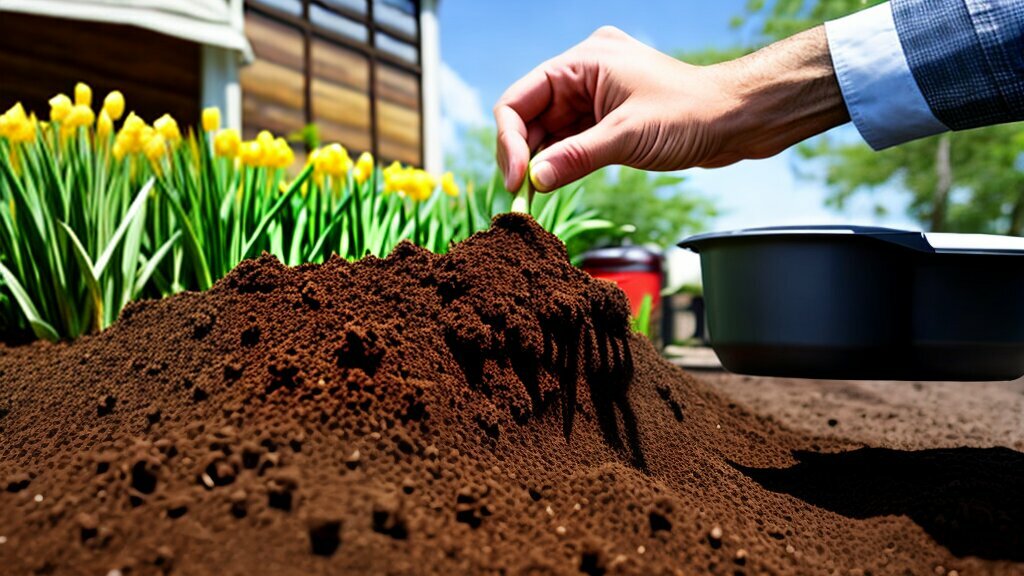
Planting Gladiolus Bulbs in Pots: Step-by-Step Process
If you’ve followed the steps for preparing your gladiolus bulbs, you’re ready to move on to planting. Here’s a simple step-by-step process for planting gladiolus bulbs in pots:
- Fill your container with potting soil, leaving about 2 inches of space at the top.
- Make a hole in the soil that is about 4 inches deep and wide enough for the bulb.
- Place the bulb in the hole with the pointed end facing up.
- Cover the bulb with soil, pressing firmly to eliminate any air pockets.
- Water the soil thoroughly, ensuring that it’s moist but not overly wet.
- Repeat steps 2-5 for each bulb, spacing them about 6 inches apart.
For an added visual, refer to the image below:
Don’t be afraid to get creative with your container choices and groupings of bulbs. Have fun with it!
Watering and Care for Container-Grown Gladiolus
Once your gladiolus bulbs are planted in pots, it’s important to give them the care they need to thrive. Here are a few watering and care tips to keep in mind:
Watering schedule
Gladiolus bulbs are prone to rot if they’re overwatered, so it’s important not to keep the soil too wet. Aim to water your gladiolus containers once a week, or when the top inch of soil feels dry to the touch. You want to keep the soil slightly moist, but not soaking wet. Consider using a moisture meter to help you determine when it’s time to water.
Fertilization
Gladiolus bulbs benefit from regular fertilization throughout the growing season. Use a balanced fertilizer, such as a 10-10-10 formula, and apply it every two weeks during the growing season. Follow the instructions on the package carefully to avoid over-fertilizing, which can lead to burnt foliage and other problems.
Deadheading
As your gladiolus plants bloom, be sure to deadhead the spent flowers to encourage more blooms and prevent the plant from putting energy into producing seeds. Simply snip off the spent flowers with a pair of clean scissors, taking care not to damage the healthy parts of the plant.
Staking
Gladiolus plants can grow quite tall and leggy, so it’s important to stake them to prevent them from toppling over in the wind. You can use bamboo stakes or other supportive structures to keep your plants upright. Place the stakes in the soil when you plant the bulbs, and tie the stems to the stakes as they grow using soft, flexible ties.
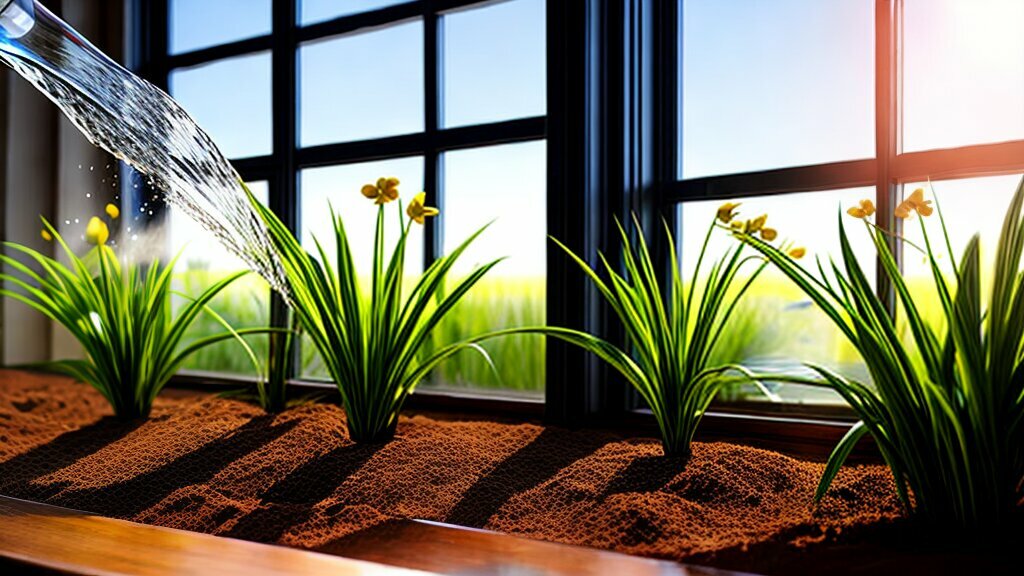
Tip: Keep an eye out for common gladiolus pests and diseases, such as thrips, spider mites, and fusarium wilt. If you notice any signs of problems, such as yellowing leaves or stunted growth, take action immediately to prevent the problem from spreading. Consult a gardening expert or your local nursery for advice on how to address common gladiolus issues.
Protecting Gladiolus Bulbs from Pests and Diseases
When it comes to growing gladiolus in containers, pests and diseases can quickly become a problem. To ensure your gladiolus bulbs stay healthy and free from harm, there are a few steps you can take.
Identifying Common Pests and Diseases
Before you can protect your gladiolus bulbs, you need to know what to look out for. Some common pests you might encounter include thrips, spider mites, and bulb mites. Diseases can also affect your plants, including fusarium wilt and botrytis.
It’s important to keep a close eye on your plants and catch any issues early on. This can help prevent the problem from spreading and potentially killing your gladiolus bulbs.
Natural Remedies for Pests and Diseases
If you do notice pests or diseases on your gladiolus bulbs, there are some natural remedies you can try before resorting to harsh chemicals. For example, you can create a homemade insecticidal soap using water, liquid dish soap, and vegetable oil. Neem oil is another natural solution that can help control pests and diseases.
It’s important to keep in mind that even natural remedies can cause harm if not used properly. Always follow instructions carefully and test on a small area before applying to your entire plant.
Preventative Measures
One of the best things you can do to protect your gladiolus bulbs is to take preventative measures. This includes proper sanitation, such as regularly removing any fallen leaves or debris from your containers. It’s also a good idea to rotate your planting locations each year to prevent diseases from building up in the soil.
If you’re concerned about pests, consider using insecticidal soap or neem oil as a preventative measure. You can also introduce beneficial insects to your container garden, such as ladybugs or lacewings, which can help control pests naturally.
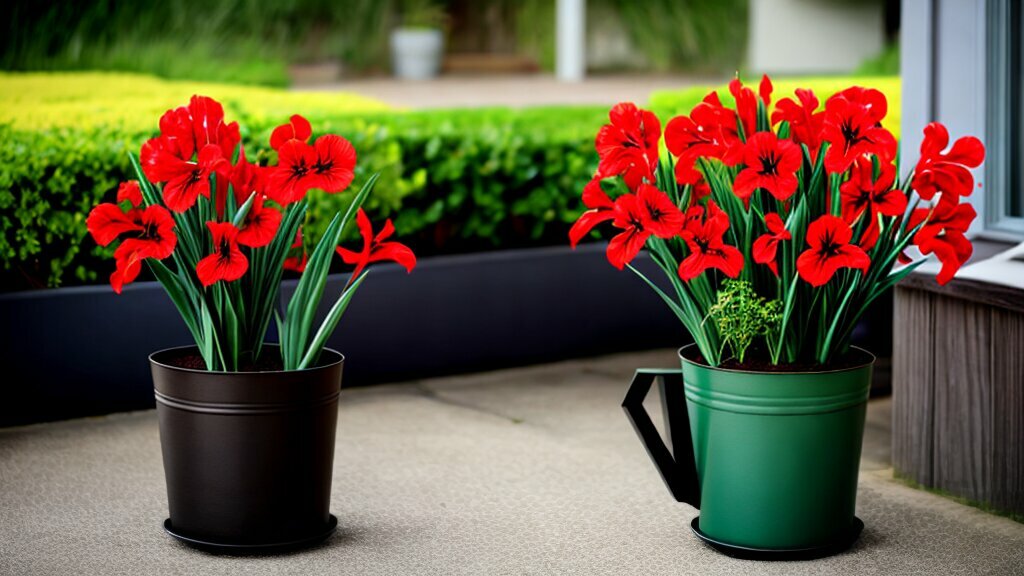
By taking measures to protect your gladiolus bulbs from pests and diseases, you can enjoy healthy plants and beautiful blooms. Regular monitoring, natural remedies, and preventative measures can all help keep your container garden thriving.
Supporting Gladiolus Stems as They Grow
Once the gladiolus bulbs have been planted and watered, it’s time to think about supporting their stems as they grow. The tall stems of gladiolus can become top-heavy, especially as they start to bloom. Without proper support, they may bend or even break under their own weight.
One effective way to support gladiolus stems is by staking them. To do this, use bamboo stakes or other sturdy wooden stakes that are at least 2 feet taller than the gladiolus stems. Insert the stakes into the soil, about 2 inches away from each stem, and tie the stems to the stakes using soft twine or strips of cloth.
Alternatively, you can use cages or trellises to support gladiolus stems. These can be made from wire or plastic mesh, and should be at least 4 feet tall to accommodate the height of the gladiolus stems. Place the cages or trellises around the gladiolus plants at the time of planting, and gently guide the stems as they grow.
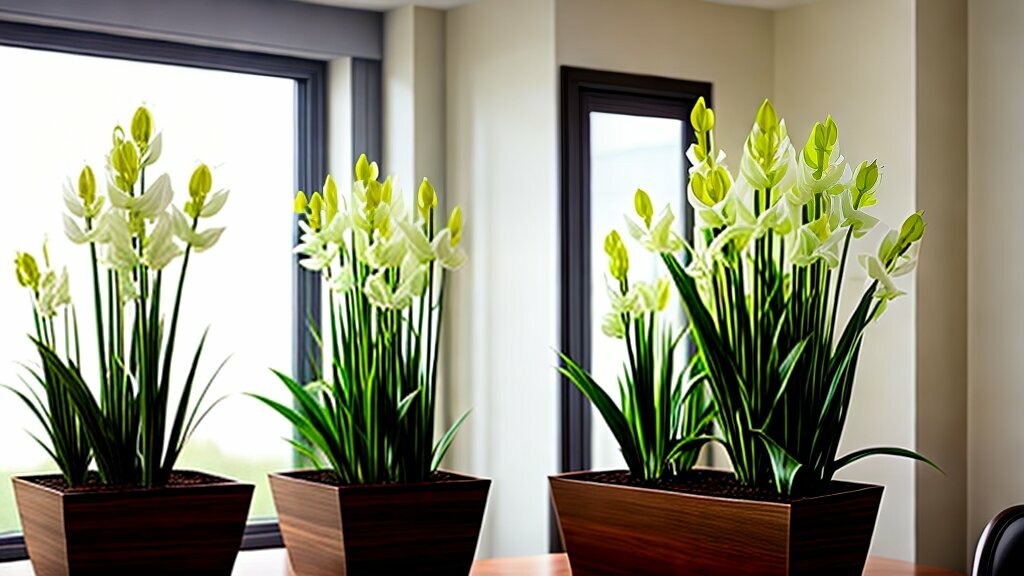
Remember to provide support for your gladiolus stems early on in the growing process, as they can become top-heavy and unstable quickly. With proper staking or caging, your gladiolus plants will grow tall and strong, producing beautiful blooms that will brighten up your garden or home.
When and How to Harvest Gladiolus Blooms
Harvesting gladiolus blooms is an exciting moment for any gardener, and it’s important to do it at the right time to ensure their maximum beauty and longevity. Typically, gladiolus blossoms are ready to be cut when they are fully open and the bottom two or three buds on the stem have also opened, but the rest of the buds are still closed. This will provide enough time for the remaining buds to open, and the entire stem will last longer in the vase once cut.
When cutting, use sharp scissors to make a clean cut at a 45-degree angle, and leave at least four leaves on the plant to ensure its healthy growth. It’s best to cut early in the morning or late in the day when the blossoms are most hydrated.
Once cut, strip off the bottom leaves and place the stems in a vase filled with fresh water and floral preservative. The preservative will help improve the longevity of the flowers, as well as prevent bacteria from growing in the water. Change the water every two days and trim the stems at a 45-degree angle every time you change the water. If all goes according to plan, your gladiolus blooms will last on average for one week.
Remember, if you’re growing gladiolus in containers, you can still enjoy the beauty of these flowers in your home! Don’t let a lack of garden space hold you back from experiencing the joy of gladiolus blooms.
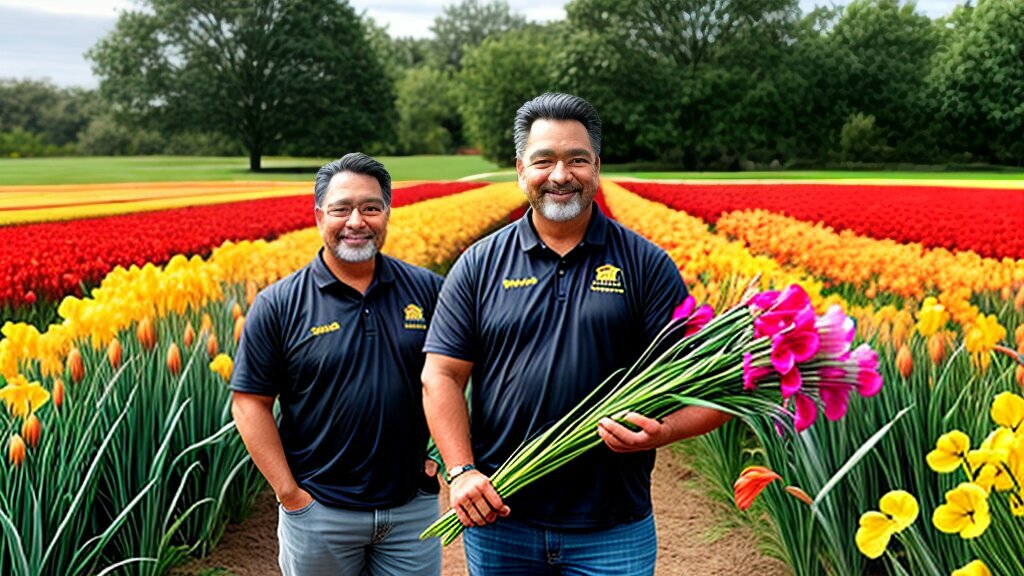
Overwintering Gladiolus Bulbs in Containers
If you live in a region with cold winters, you may wonder what to do with your gladiolus bulbs in containers once the growing season ends. As a rule, gladiolus bulbs are not frost-tolerant and should be protected from freezing temperatures. Overwintering gladiolus bulbs is a simple and easy process that will help you to enjoy their beauty for many years to come.
The first step in overwintering gladiolus bulbs is to stop watering them once the foliage dies back naturally. This usually happens in the fall, and it’s a sign that the gladiolus bulbs have finished storing energy for next year’s growth. Once the foliage has withered, cut it off at ground level using a pair of shears or scissors. Be careful not to damage the bulbs as you do this.
Next, you’ll need to dig up the bulbs from their potting mix and remove any soil or debris. Use your hands or a soft-bristled brush to gently clean the bulbs, being careful not to bruise or cut them in the process. Once the bulbs are clean, you can inspect them for any signs of damage or disease. Discard any bulbs that are soft, mushy, or discolored.
| Tip: | It’s a good idea to label your gladiolus bulbs before you store them for the winter. Use a marker to write the cultivar name or color on a small piece of masking tape, and attach it to the bulb. This will help you to remember which bulbs to plant next spring. |
|---|
After cleaning and sorting your bulbs, place them in a dry, cool, and dark place for the winter. A garage, basement, or closet should work well. Make sure the temperature stays above freezing but below 50°F. You can store the bulbs in paper bags or in a ventilated container filled with sawdust, vermiculite, or peat moss. Avoid storing the bulbs near fruits or vegetables, as these can release ethylene gas, which can harm the bulbs.
It’s a good idea to check on your gladiolus bulbs periodically during the winter to make sure they haven’t dried out or rotted. If you notice any signs of moisture or mold, remove the affected bulbs and discard them to prevent the spread of disease.
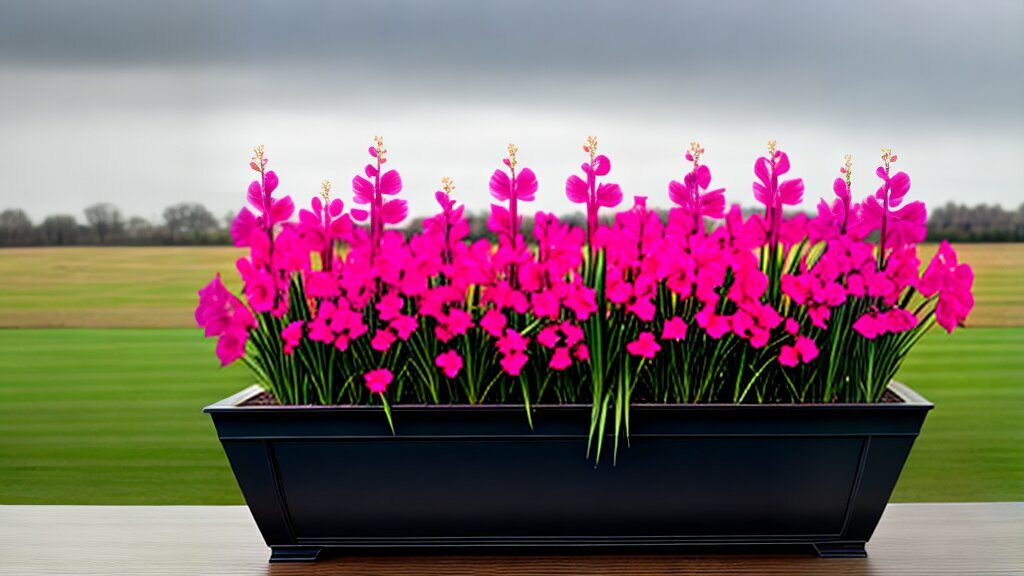
When spring arrives, take your gladiolus bulbs out of storage and inspect them again for any signs of damage or disease. Don’t be alarmed if they look a little shriveled or pale; this is normal and they should plump up once you plant them.
Plant your gladiolus bulbs in fresh potting mix, following the steps outlined in the previous sections. Water them well and place them in a sunny location. With any luck, you’ll soon be rewarded with beautiful blooms once again!
Tips and Tricks for Successful Gladiolus Container Gardening
Container gardening can be a rewarding way to grow gladiolus, and with a few tips and tricks, you can ensure success with your container-grown blooms. Here are some tips to help you get started:
- Choose the right container: Gladiolus bulbs need room to spread out, so choose a container that is at least 12 inches deep and wide enough to accommodate multiple bulbs. Make sure it has drainage holes to prevent water from accumulating at the bottom.
- Use quality soil: A well-draining potting mix with perlite or vermiculite can ensure that your gladiolus bulbs have the right growing conditions.
- Plant bulbs at the right time: Plant gladiolus bulbs in containers in the spring, once the threat of frost has passed and the soil is warm enough. Plant bulbs in staggered intervals to enjoy continuous blooms throughout the season.
- Water regularly: Gladiolus bulbs need consistent moisture, so make sure to water them regularly. Don’t let the soil dry out completely, but also avoid overwatering, which can lead to rot.
- Fertilize: Feed your gladiolus bulbs periodically with a balanced fertilizer, following the manufacturer’s instructions. This will help promote healthy growth and vibrant blooms.
- Stake tall stems: To prevent tall gladiolus stems from toppling over, use supports such as stakes or cages. This can also help improve air circulation and prevent disease.
- Protect from pests: Keep an eye out for common gladiolus pests such as thrips and spider mites, and treat them promptly with natural or organic pest control methods.
With these tips in mind, you can enjoy the beauty and fragrance of gladiolus blooms right on your patio or balcony. Happy container gardening!
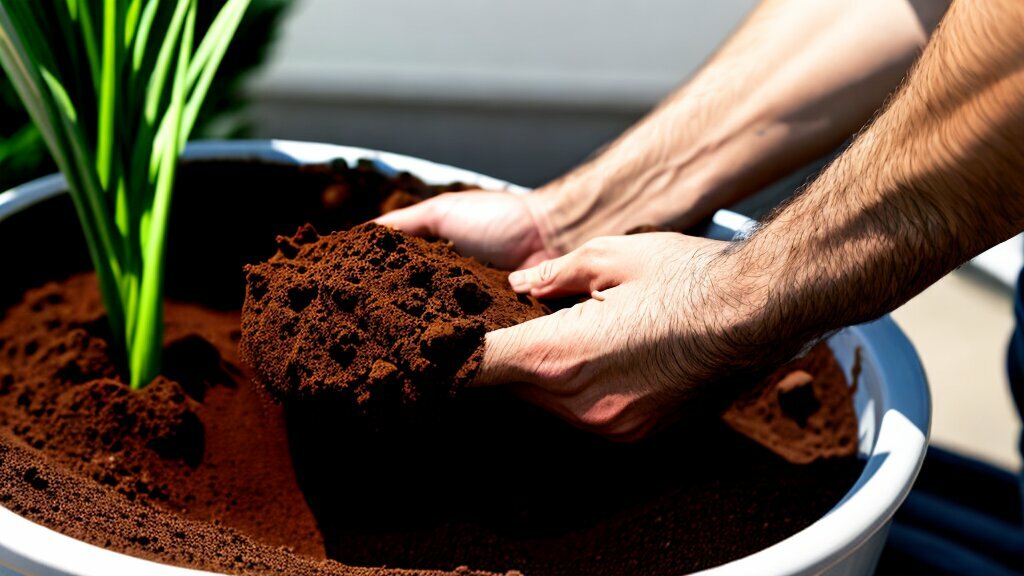
Conclusion
In conclusion, planting gladiolus bulbs in pots can be a rewarding and beautiful addition to any container garden. By following the simple steps outlined above, you can successfully grow and care for these gorgeous flowering plants. Remember to choose the right container and soil, prepare the bulbs properly, provide adequate water and care, protect them from pests and diseases, and support the stems as they grow.
With a little effort and attention to detail, you can enjoy the vibrant blooms of gladiolus in your container garden for months at a time. Whether you are a seasoned gardener or new to container planting, gladiolus container gardening is a fun and fulfilling activity.
Happy gardening!
FAQ
Q: Can I plant gladiolus bulbs in pots?
A: Yes, you can plant gladiolus bulbs in pots. In fact, growing gladiolus in containers can be a convenient and space-saving option.
Q: What type of container is best for gladiolus bulbs?
A: When choosing a container for gladiolus bulbs, opt for one that is at least 12 inches deep to accommodate the long roots. Ensure the pot has proper drainage holes.
Q: What type of soil should I use for potting gladiolus bulbs?
A: Use well-draining potting soil that is rich in organic matter. Consider adding perlite or sand to improve drainage.
Q: How do I prepare gladiolus bulbs for potting?
A: Before potting gladiolus bulbs, remove any dead or damaged outer scales and dust them with a fungicide. Soaking the bulbs in water for a few hours can help rehydrate them.
Q: What is the step-by-step process for planting gladiolus bulbs in pots?
A: Start by filling the pot with the prepared potting soil. Plant the bulbs upright, with the pointed end facing upwards, and cover them with soil. Water thoroughly.
Q: How should I water and care for container-grown gladiolus?
A: Water gladiolus regularly, keeping the soil consistently moist but not waterlogged. Fertilize every few weeks with a balanced fertilizer. Remove spent blooms to encourage new growth.
Q: How can I protect gladiolus bulbs from pests and diseases?
A: Ensure proper sanitation by cleaning any debris around the pots. Protect bulbs from pests like aphids and spider mites by regularly inspecting and using appropriate organic insecticides.
Q: How can I support gladiolus stems as they grow?
A: Use stakes or plant supports to prevent tall gladiolus stems from bending or toppling over. Gently tie the stems to the supports using soft plant ties.
Q: When and how should I harvest gladiolus blooms?
A: Harvest gladiolus blooms when the bottom few flowers on the spike have opened. Cut the stem at a diagonal angle and place the cut flowers in water immediately.
Q: How do I overwinter gladiolus bulbs in containers?
A: To overwinter gladiolus bulbs in containers, reduce watering and allow the foliage to die back naturally. Once the foliage has dried out, store the pots in a cool, dry location.
Q: What are some tips and tricks for successful gladiolus container gardening?
A: Provide adequate sunlight, maintain proper watering, and fertilize regularly to ensure healthy growth. Deadhead spent blooms and monitor for any signs of pests or diseases.
Q: Do you have any additional information or tips?
A: Make sure to select healthy bulbs for planting, as this will greatly impact the success of your gladiolus container gardening. Don’t hesitate to experiment with different pot sizes and varieties to find what works best for you.
 Little Garden Tips
Little Garden Tips

